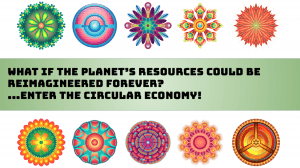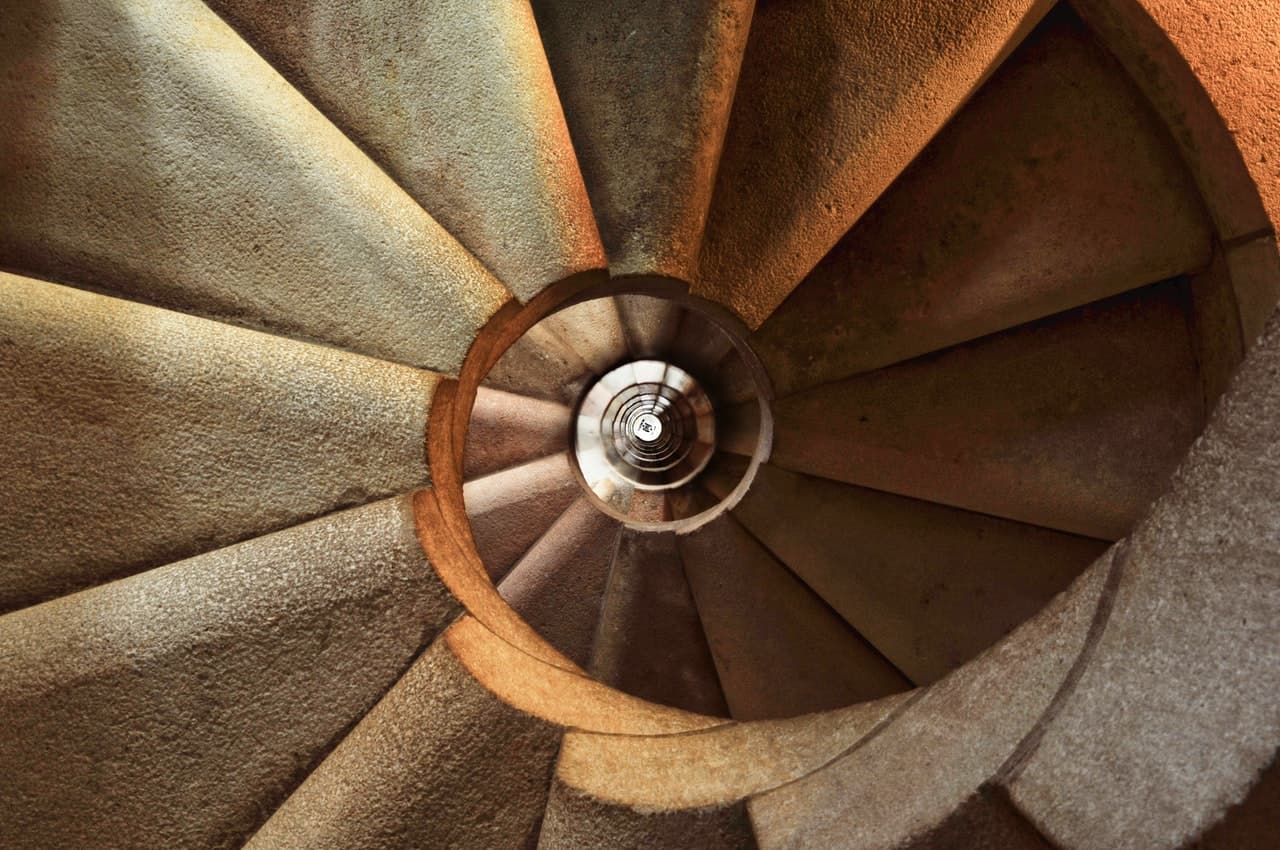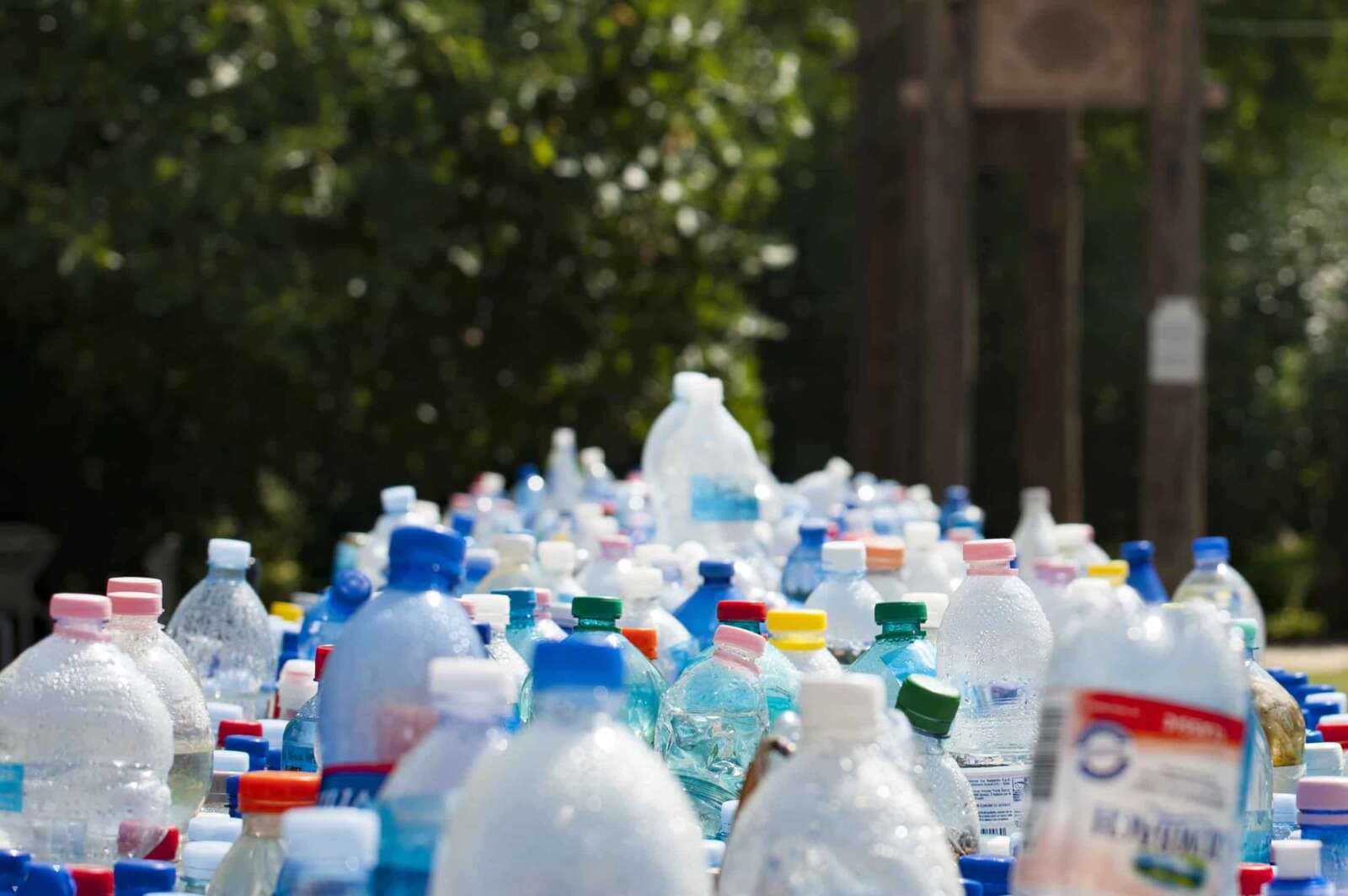It’s no longer a rumour that the planet is dying at our hands, but what can be done about it? Moving away from our take, make, dispose ‘business as usual’ model, we need to move to a circular one – where everything we make can be used again and again and again.
We need to take inspiration from what Mother Nature does naturally. Earlier this year the Circular Economy Club ran a global mapping exercise to uncover circular initiatives taking place globally and make this information available to all. Over 65 cities got involved to map out the circular initiatives happening in their cities and the results are inspiring.
We asked Marialine Verdickt, Founder and CEO of CircleWerkz and CEC Circular Economy Organiser for Singapore, to explain why circular is the future, the key takeaways from the global mapping exercise and how we can all get involved with our daily actions.

Houston… we have too many problems
We all know our environment is compromised, but do we really know or – dare I say – care how acute it really is? Let’s look at the top 3 out of 5 basic survival needs – oxygen, water, and food – to assess just how bad it is (for the curious among you, the other 2 essentials would be “shelter” and an impossibly strong “survival” instinct”).
Maybe the 3 stats below will be enough to shock us once and for all out of our daily slumber and propel us into more immediate and meaningful action. Let’s start with the air we breathe.
- Our air quality is dangerously low
Nine out of 10 people around the world breathe polluted air, according to a 2018 report by the World Health Organization(WHO). It estimates that around 7 million people die every year from exposure to fine particles in polluted air and that many of the world’s megacities exceed WHO’s guideline levels for air quality by more than five times. The fine particles penetrate deep into the lungs and cardiovascular system and represent a major risk to people’s health. A breath of fresh air is becoming a rare commodity.
- Our seas and waterways are being choked by plastics
In 2014, the Ellen MacArthur Foundation and the World Economic Forum predicted, in a report called The New Plastics Economy, that there will be more plastic than fish in the sea by 2050. Other than the bigger obvious pieces of plastic – microbeads, nurdles, and plastic fibers are now increasingly finding their way into our seas. When these are consumed by birds and fish, they act like poison in their gut both through their physical presence, but also because they release toxic chemicals they have absorbed in the sea because of their hydrophobic nature.
- Our soils are eroding rapidly
Half the topsoil has been lost over the last 150 years and it can take a 1000 years to generate 3cm of new topsoil. In 2015, a UN official went as far as to suggest that we only have 60 years of viable topsoil left. No topsoil = no food! By 2075, the world could be facing widespread starvation. New technologies are on the horizon but the verdict is still out on whether the nutritional content of such produce will ever match that of organically grown produce.
But that’s not all…
In summary, we have limited clean air to breathe, little clean water to use and hardly any soil to abundantly grow food on. But it does not stop there! According to the WWF 2016 Living Planet Report, our biodiversity is plummeting with populations of vertebrate declining by 58% between 1970 and 2012, whilst also witnessing a whopping 81% drop in freshwater species in that same period.
Increasing urbanisation trends project that 66% of the world population will live in cities by 2050, putting enormous pressure on governments worldwide to provide adequate housing, infrastructure, transport, energy, education, and healthcare. Climate change poses a fundamental threat to people, species and places due to rising sea levels and warmer oceans, whilst longer, more intense droughts threaten crops, wildlife, and freshwater supplies.
To top it all off, every year the world is using more resources than the Planet’s ability to replenish itself. This year, Earth Overshoot Day – the point at which global demand outstrips global supply – will fall on August 1st, last year it fell on August 8th and 20 years ago it fell in October. In reality, this means that the world needs 1.7 times its available annual resources to meet global demand, but if everybody lived like the United States, the world would require five whole Earths to sustain itself. Ouch!
Houston help us out!

Source: www.footprintnetwork.org
The solution might be staring us in the face
The scale of these issues is overwhelming and largely unprecedented. One could easily be forgiven for losing faith in any kind of spectacular turnaround. So are there still dreamers, fixers, problem-solvers, and imagineers among us, who are hoping to bring us back on course before D-day, whatever D-day is?
It seems like the answer lies within Mother Nature itself…a fully closed loop, circular system where nothing gets wasted. Unlike our current linear, extractivist “take, make and dispose” economy, which relies heavily on large quantities of cheap, easily accessible materials and energy, our Earth’s natural systems are regenerative and restorative.
The end of waste as we know it
So what about an economic system, devised along similar lines? Could a closed loop economy be a plausible alternative? Many seem to think so. According to the Ellen MacArthur(*) Foundation, the “circular economy” is about a fundamental systems change, not merely taking what we have and making it more efficient. It aims to completely redefine products and services by designing waste out altogether while minimising any negative impacts. In a perfect circular economy, resources mined from the earth would be reused over and over, while biological resources would be used as long as possible and then returned to the earth in a biologically sound way.
We interrupt this broadcast….
(*) The circular economy movement was launched by Dame Ellen MacArthur, who on a sail-around-the-globe trip was confronted by the huge amount of garbage the world generates, but the concept cannot be traced back to one single date or one single author.
Other schools of thought have refined or developed the concept further like Cradle-to-cradle design, Biomimicry, the Blue Economy, Natural Capitalism or Industrial Ecology
It all starts with design
So how does it compare with our existing linear model? … as explained in the graphic below, there is no more waste at every single stage of the process because the product’s “end of life” is taken into consideration right from the design stage. If the product is designed with a cradle-to-cradle approach, it will be broken down in biological and technical components at the end of its life. These components can then be re-imagineered and re-used in a brand new product and production cycle…a process that can go on forever.

Source: www.circulatenews.org
The $$$ side of the circular economy
In 2015, a joint study by the Ellen MacArthur Foundation, SUN, McKinsey & Co. determined that transitioning to a circular economy model could unleash a 1 trillion dollar growth opportunity for Europe and the world through increased economic growth, substantial net material cost savings, job creation potential, and innovation.
In the 2018 “The New Big Circle” report from the World Business Council for Sustainable Development and The Boston Consulting Group was even more optimistic and projects that transitioning to a circular model could unlock a whopping $ 4.5 Trillion of GDP growth.
Why this slow-burn romance?
Although the concept has been gaining traction since the late 70s, there are surprisingly few takers so far. In January 2018, the inaugural Circularity Gap Report, produced by Circle Economy, a social enterprise based in Amsterdam, announced that our world economy is only 9.1% circular, leaving a massive circularity gap. Closing that circularity gap should be front of mind for everybody as it would prevent further and accelerated environmental degradation and social inequality, but the implementation of the circular model does not come without its own challenges.
To create real success, one would have to change every part of the business from the finance department to design, marketing, manufacturing, and distribution. It may even involve creating new departments such as resource recovery. To change a company’s mindset from linear, where products are thrown away after use to circular, where the company has to focus on getting the most utility out of every item, is difficult and may take time that we may no longer have.
Enter – an open-source database as an accelerator for change
To help the global economy transition to this far less degenerative circular model, it is imperative that we have a good understanding of existing, successful circular initiatives and a strong, collaborative network of CE professionals, who are willing to share insights and resources. The Circular Economy Club, a not-for-profit group headquartered in London, has been connecting circular economy professionals in over 60 countries since 2012 and provides them with tools, resources, and events to spur collaboration.
Their latest brainchild to establish the first-ever global database of circular economy initiatives came in the form of the Circular Economy Global Mapping week, which was held in February 2018 in 40 countries. It was developed to accelerate the global transition from a linear to a circular model by mapping out all the circular initiatives taking place globally and by making this open source database available online and free for all. The event attracted 2100 participants in over 65 cities and generated 3000 initiatives for the database which is now live and can be accessed by all. In Singapore, the workshop got sold out twice, attracted 70 professionals and generated 66 CE initiatives, a respectable second place in Asia after Taiwan.

The Singapore CE Mapping Session took place at the UWCSEA IDEAS HUB on Feb 8th 2018
Europe is leading the CE pack
The CEC press release for the event concludes that of the 3,000 circular economy initiatives highlighted in the database, which include projects ranging from fashion to real estate to energy, approximately 62 percent were based in Europe. The remainder came from Asia (10.8%), North America (10.3%); Latin America (10.2%) and Africa (6%).

- A quarter (25%) of the circular economy initiatives cited in the database involved using waste as a resource (e.g. recycling, compost, energy from waste, etc.), which was the highest circular economy strategy reported.
- City projects (buildings, infrastructure, mobility, logistics, energy, water, waste management) utilized circular economy strategy implementation most often (25% of respondents identified with this sector), compared to other sectors (including food and beverages, which came in at 18%).
- Most initiatives (71%) are associated with the private sector, while the fewest initiatives (5%) represent educational institutions.
The 4 key takeaways from the mapping week revolve around building on the current momentum around the circular economy that is visible all over the world, giving citizens the opportunity to get involved to help define their future, clarifying the ambiguity that still exists between circular and non-circular and urging stakeholders to communicate and collaborate more effectively among themselves
The future can only be circular
In a world, whose population is projected to reach 9.8 billion people by 2050 – a growth rate of more than 30% in a mere 32 years – it is blatantly clear that the globe simply does not have enough natural resources to continue the current linear economic model. So enter the circular economy, which – as a multi-stakeholder model – has the ability to unite a global community behind an action agenda, whilst people can feel engaged and empowered both on a collective and individual level. Its systemic approach will require the power of entrepreneurship, a thirst for innovation and the need for collaboration…The breadth and depth of the circular approach will ultimately connect all stakeholders at a much deeper level and offers a reasonable promise of being able to heal the planet by mimicking the process of what it does best ie self-regenerate.
Become a circular economy advocate today with these #LittleGreenSteps
- Never take more than you need and always give back more than what you have taken.
- Increase your understanding of the Circular Economy by exploring the following websites: CEC, Circle Economy and the Ellen MacArthur Foundation.
- Become familiar with the CE database mentioned above. You will be surprised how many funky CE initiatives are already out there.
- Manage and understand your waste streams. If the product cannot easily be broken down in technical and biological components, it will probably equate to valuable resource loss as it won’t be fed back into the production chain. Make informed purchasing choices.
- Start looking for “products as a service”. More and more companies are reviewing their current “owner” models and moving to “leasing” models, whereby the customer no longer buys the product outright but leases it instead. In this model, the manufacturer remains the owner and enters into an agreement to service the product when it breaks down. Check out Bundles for example: a subscription service for high-quality appliances.
- Become a volunteer Circular Economy Organiser in your city to help drive and shape the circular agenda.


